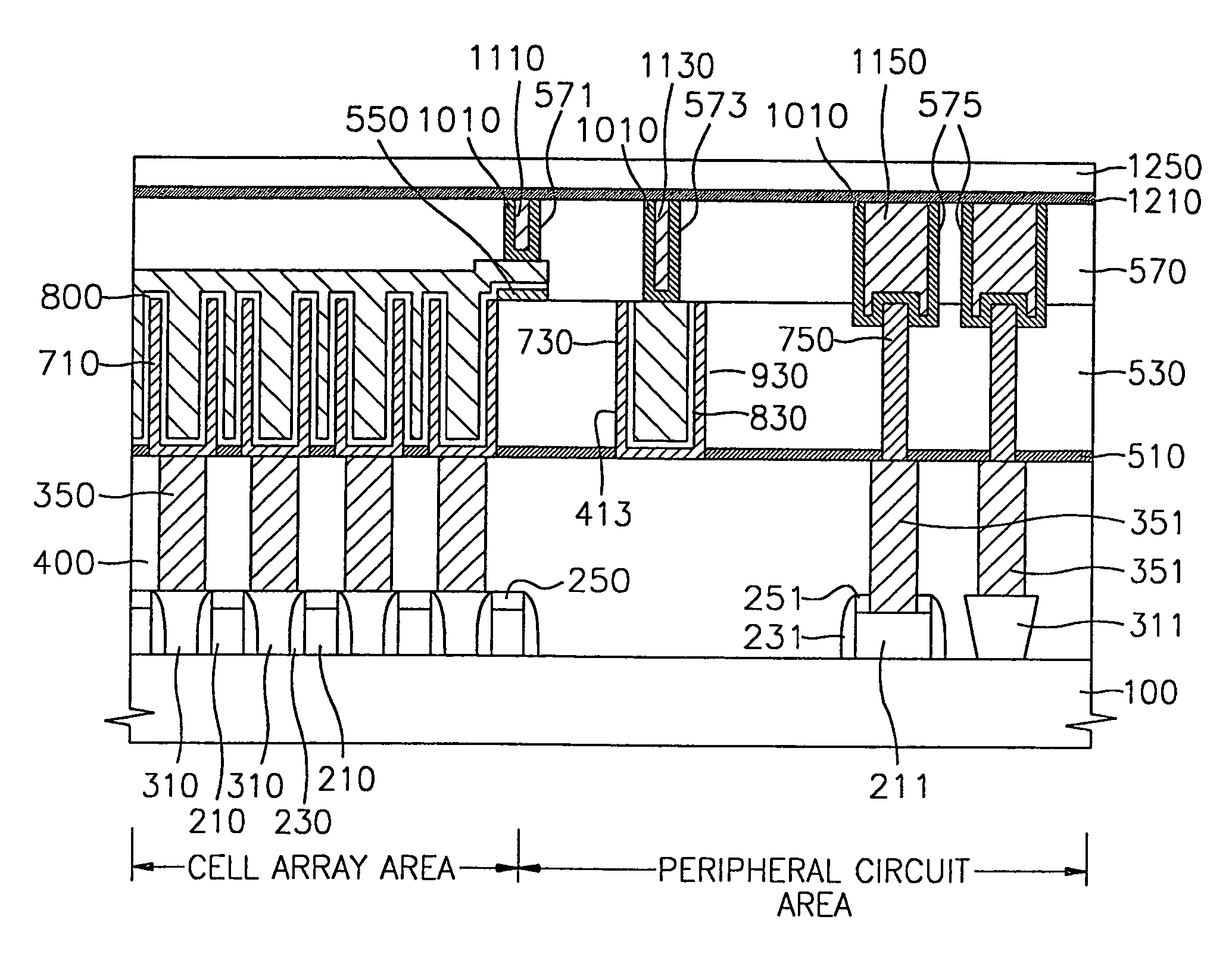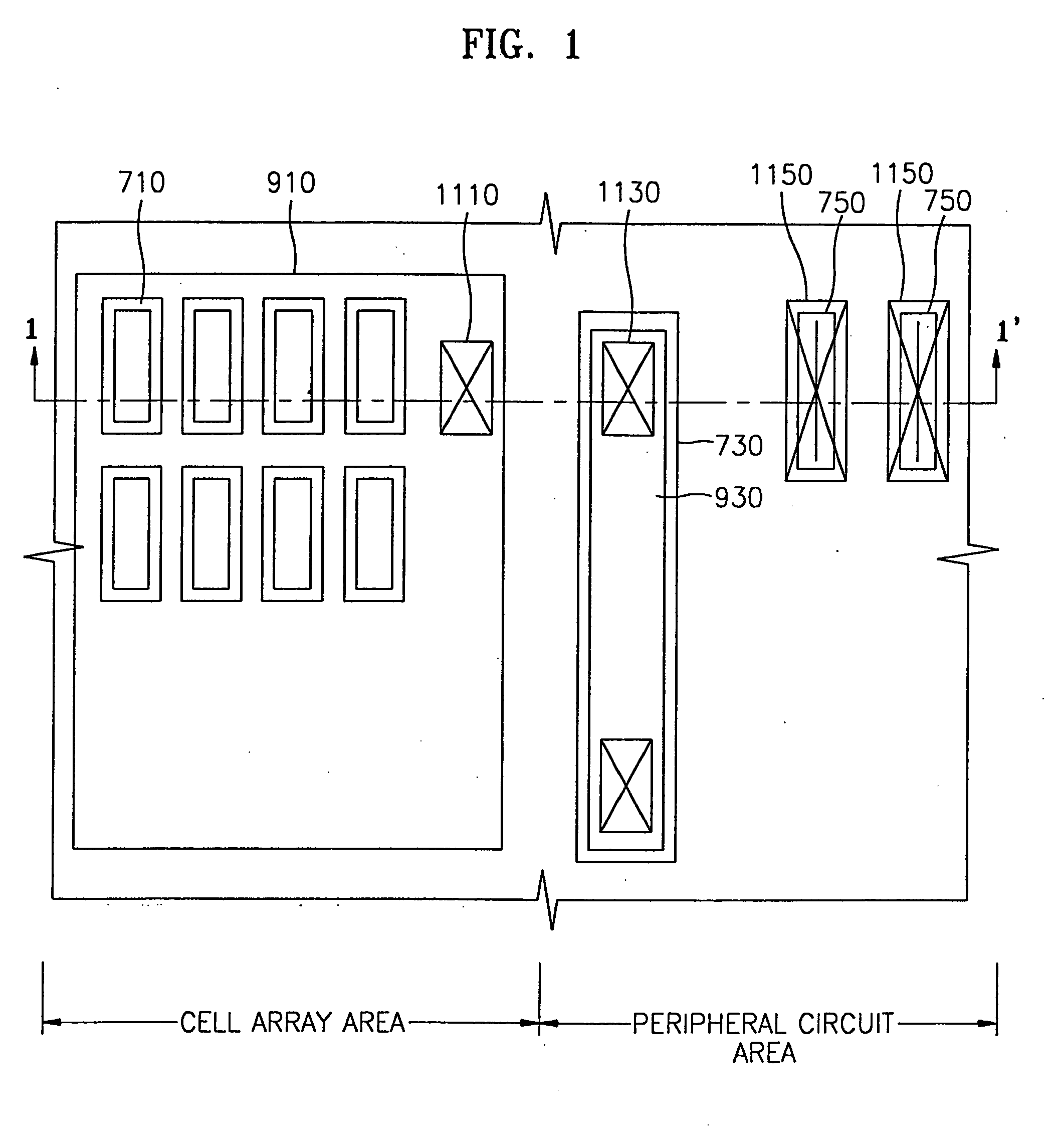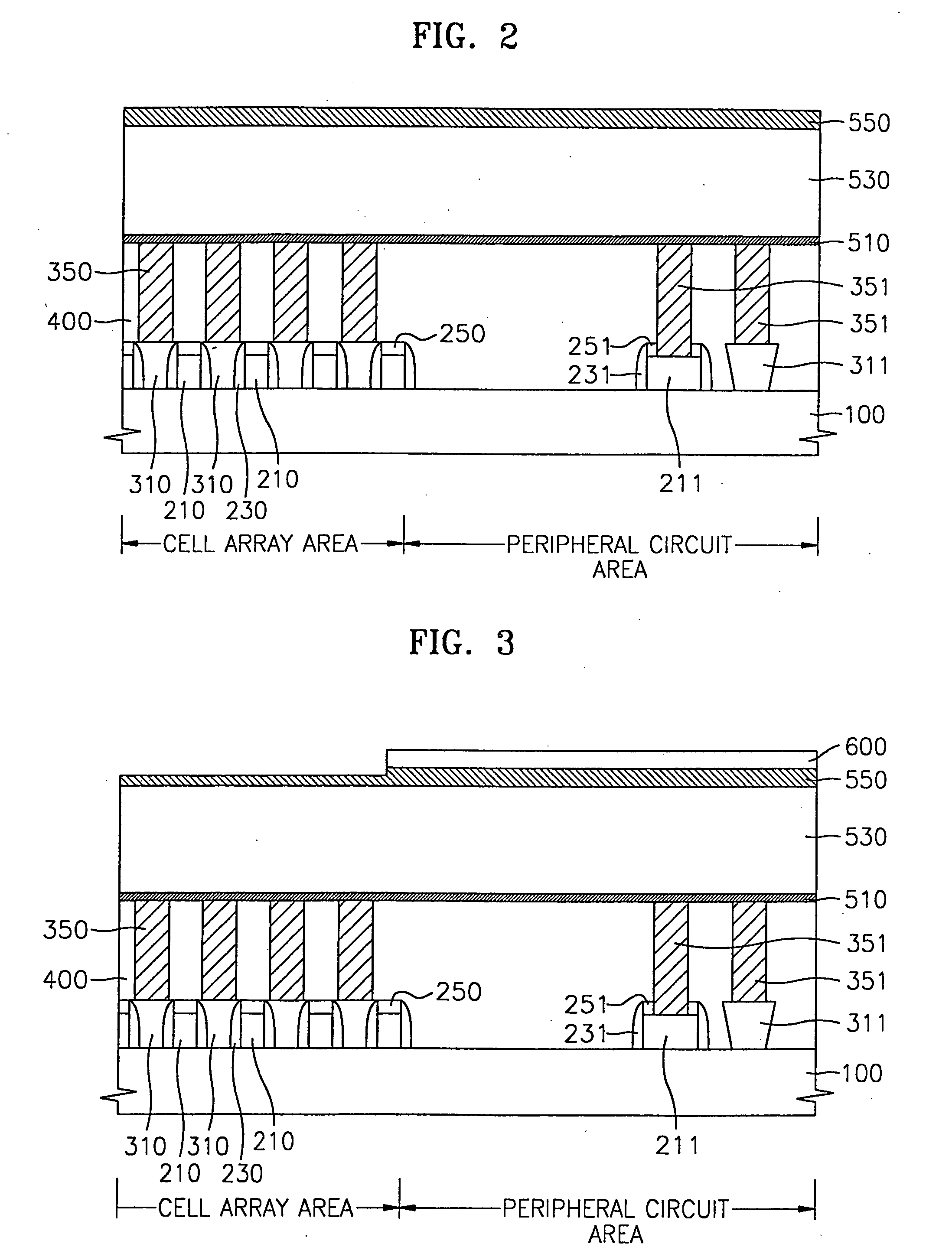Semiconductor memory device having resistor and method of fabricating the same
a memory device and resistor technology, applied in the direction of resistors, solid-state devices, basic electric elements, etc., can solve the problems of abnormal operation of the dram device, difficult to maintain uniform uneven width of the resistor, so as to increase the cost of patterning and uniform width.
- Summary
- Abstract
- Description
- Claims
- Application Information
AI Technical Summary
Benefits of technology
Problems solved by technology
Method used
Image
Examples
first modified embodiment
[0030]In the present invention, the width of the second molding hole 413 is so narrow enough that the storage node layer 700 completely fills the second molding hole 413. In this case, the capacitor dielectric layer 800 and the plate node layer 900 are not formed in the second molding hole 413, but formed on the first portion 730 of the resistor.
second modified embodiment
[0031]In the present invention, the widths of the third molding holes 415 are wide enough that the storage node layer 700 does not completely fill the third molding holes 415, but is conformably formed on the bottoms and sidewalls as with the first molding holes 411. In this case, the capacitor dielectric layer 800 and / or the plate node layer 900 may be formed in the third molding holes 415.
[0032]Referring to FIGS. 1 and 9, the plate node layer 900 and the capacitor dielectric layer 800 are patterned by a photolithography technique to form a plate node 910 on the plurality of storage nodes 710 in the cell array area. Moreover, the plate node layer 900, the capacitor dielectric layer 800 and the anti-reflective layer 550 are removed simultaneously in a portion of the peripheral circuit area except in the second molding hole 413. As a result, the remaining portion of the mold layer 530 is exposed and a second portion 830 of the resistor in the second molding hole 413 and a third porti...
PUM
| Property | Measurement | Unit |
|---|---|---|
| capacitance | aaaaa | aaaaa |
| height | aaaaa | aaaaa |
| height | aaaaa | aaaaa |
Abstract
Description
Claims
Application Information
 Login to View More
Login to View More - R&D
- Intellectual Property
- Life Sciences
- Materials
- Tech Scout
- Unparalleled Data Quality
- Higher Quality Content
- 60% Fewer Hallucinations
Browse by: Latest US Patents, China's latest patents, Technical Efficacy Thesaurus, Application Domain, Technology Topic, Popular Technical Reports.
© 2025 PatSnap. All rights reserved.Legal|Privacy policy|Modern Slavery Act Transparency Statement|Sitemap|About US| Contact US: help@patsnap.com



